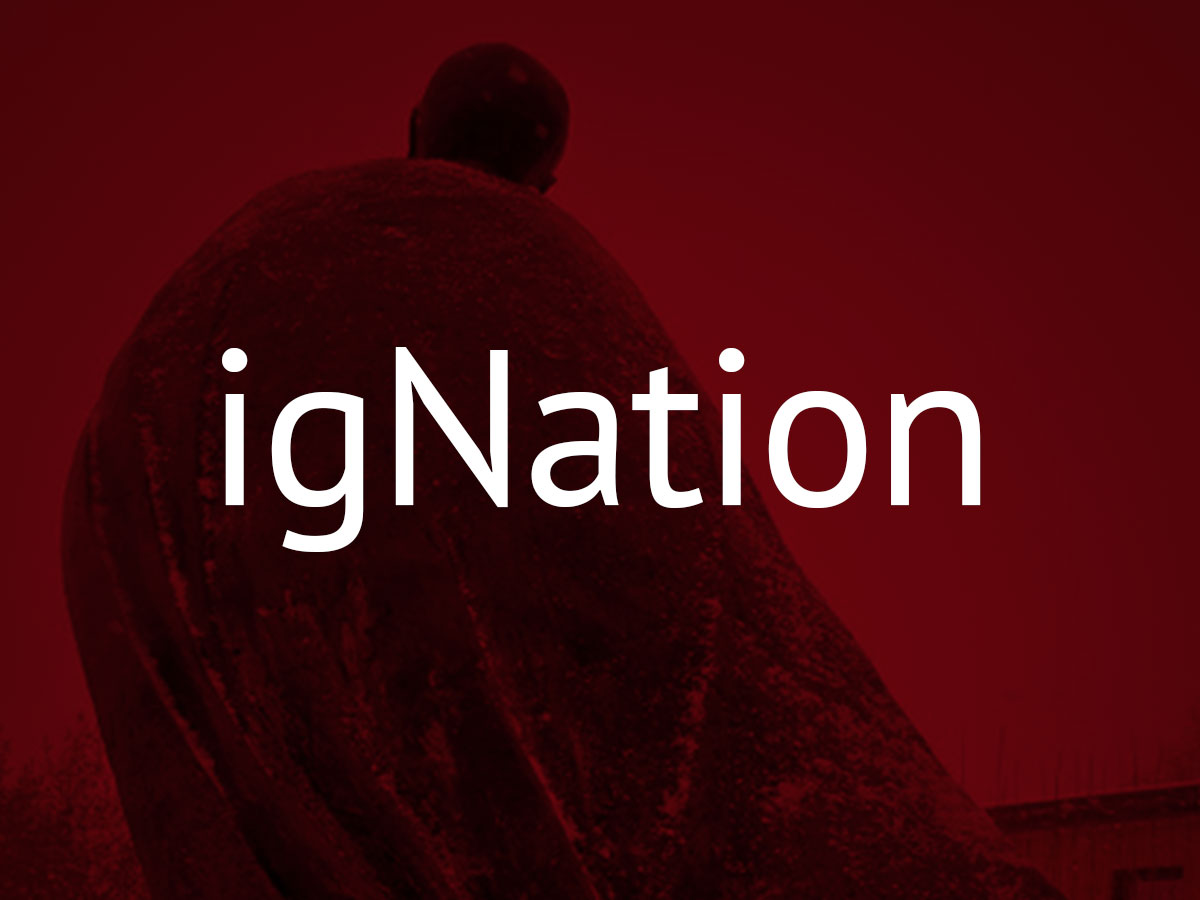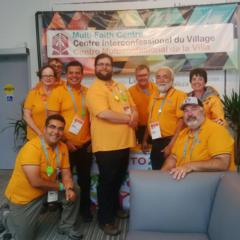Pam Am/Parapan Am Chaplaincy: More Precious Than Gold

1) Tell us about your role in the Pan Am/Parapan Am Games. How did you get involved??
I was part of a team of chaplains from many faith traditions. We created the Multi-Faith Centre in the Athletes' Village to attend to the spiritual needs of the athletes. Christians, Buddhist, Muslims, Jewish and Aboriginal leaders worked together to provide this service to the athletes, their delegations, volunteers and employees at the Village.
I got involved when Deacon Steve Pitre of the Archdiocese of Toronto contacted the Jesuits looking for volunteers for the Multi-Faith Centre and indicated speaking Spanish and Portuguese would be an asset. I saw it as an opportunity to take a break from my academic duties at the University of Manitoba (I am currently pursuing a PhD in Peace and Conflict Studies) and to use my skills as a peace-builder and mediator, working along representatives of different spiritual traditions.
I became a member of the biggest non-military voluntary workforce in Canadian History: 22,000 volunteers!
2) What did a typical day at the Games look like for you?
The day was split into two eight-hour shifts: in the morning from 7 a.m. to 3 p.m. or in the afternoon from 3 p.m. to 11 p.m. Most of my shifts were in the morning: I arrived at 7 a.m. to prepare for Mass, which we had daily at 8 a.m. After Mass, I attended to our Marian corner. During the Games we had an image of Our Lady of Guadalupe present for devotion, with some candles.
During the rest of the day, I received athletes and their delegations for the Sacrament of Reconciliation, counselling, blessings of their medals or equipment and for informal spiritual conversation. We provided rosaries and prayer cards to the people who visited the centre and our Marian corner. We also had interesting conversations among the faith leaders serving at the Multi-Faith Centre, increasing opportunities for ecumenical and interreligious dialogue and understanding. I was often asked to help as a translator.
3) Why do you think it is important to have a Catholic presence in the Athletes' Village?
I think a Catholic presence was important because most of the Latin American countries have a strong Catholic heritage. To properly serve the Pan Am and Parapan Am community, it was necessary to have a Catholic presence. That was very clear with the presence of the sacred image of Our Lady of Guadalupe, which was visited by many people from different countries, who came to say a prayer, light a candle or pray the rosary.
Also, my interaction with those of other faith traditions showed the commitment to dialogue and mutual understanding the Catholic Church strives to achieve.
4) What unique gifts can priests bring as they offer a pastoral presence at an event like this?
 At these events, participants are often stressed and feeling vulnerable. As a priest, I can give them the support of the sacraments (Eucharist and Reconciliation), preach the Word and encourage them in their journey with Jesus Christ.
At these events, participants are often stressed and feeling vulnerable. As a priest, I can give them the support of the sacraments (Eucharist and Reconciliation), preach the Word and encourage them in their journey with Jesus Christ.
5) The popes have spoken regularly about sport as an analogy for the spiritual life and as a means of teaching virtue. How do you see that play out at the Pan Am/Parapan Am Games?
We had many opportunities in homilies and spiritual conversations to talk about sport as a means of teaching virtue. Not only did we share the letters of St. Paul, who often uses sport to illustrate his teachings, but also documents from the papacy regarding virtues, discipline, and youth and sport. I had the opportunity to teach, especially to those athletes that went back to their countries without medals, that participation itself is worthwhile.
I encouraged them to be leaders, so they can show the youth in their communities the importance of a goal-oriented life of virtue. In this sense, a young athlete can change many lives with their example of discipline and virtue. This is especially important in poor countries, many of which had the opportunity to compete in the Pan Am and Parapan Am Games.
6) What was your most memorable moment of this volunteer experience?
I had so many! The morning Masses were full of joy and praise. I had athletes who told me they had left the Church but were open to coming back to their faith because they felt the joy of the Gospel. Every conversation with the athletes had a big impact on me. I am convinced that every Parapan Am athlete is an authentic hero.
Overall, I received much more than I gave. I liked when the athletes came with their medals to give thanks to Our Lord, to pray and present their fears to the Lord before a competition, or just to sing some hymns and songs to Mary before going to bed.
One athlete who has a significant impact on me was Scott Thomas. Scott is a US athlete and a gold medalist and now a Pan Am Champion in karate. He came to the Masses I celebrated in the morning and asked me to bless four medals of St. Sebastian, the patron saint of athletes before his competition. The matches were very difficult. He lost one of the fights, but won the gold medal match against the Venezuelan favourite (a combatant who comes from my country of birth). He came the following day and made it clear to me that match was won in the name of the Lord and with the help of the Communion of Saints in which we believe!
It was a great experience to encourage athletes, such as Scott, to have confidence in the Lord and his Church. Those athletes are sent back to their countries with a greater awareness of the impact they can have on youth in their communities, as persons who have found meaning and joy in their lives not in winning a competition, but in Christ.




No Comments